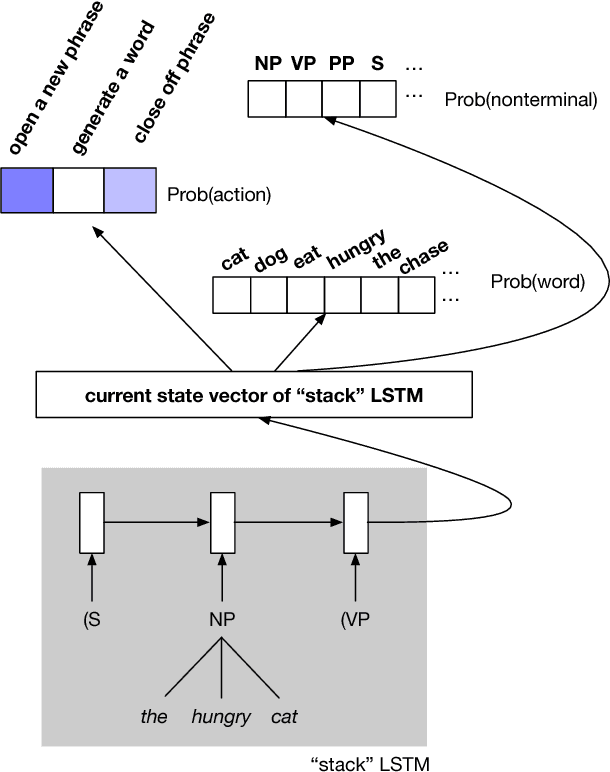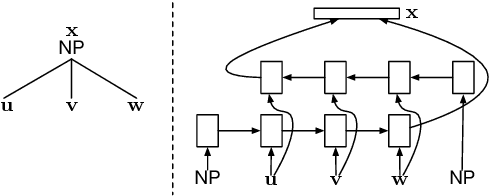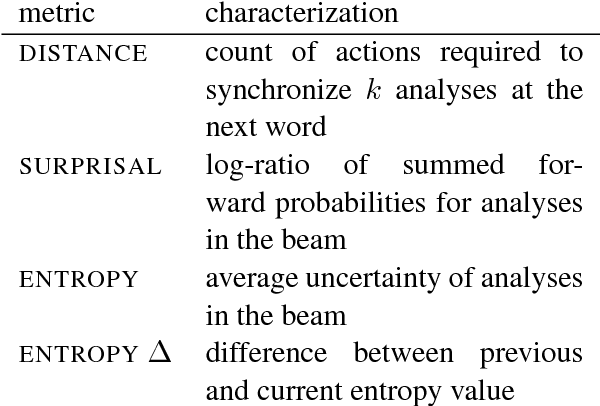Finding Syntax in Human Encephalography with Beam Search
Paper and Code
Jun 11, 2018



Recurrent neural network grammars (RNNGs) are generative models of (tree,string) pairs that rely on neural networks to evaluate derivational choices. Parsing with them using beam search yields a variety of incremental complexity metrics such as word surprisal and parser action count. When used as regressors against human electrophysiological responses to naturalistic text, they derive two amplitude effects: an early peak and a P600-like later peak. By contrast, a non-syntactic neural language model yields no reliable effects. Model comparisons attribute the early peak to syntactic composition within the RNNG. This pattern of results recommends the RNNG+beam search combination as a mechanistic model of the syntactic processing that occurs during normal human language comprehension.
 Add to Chrome
Add to Chrome Add to Firefox
Add to Firefox Add to Edge
Add to Edge